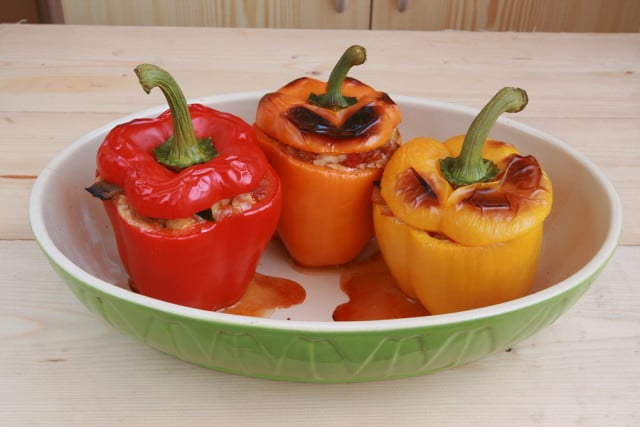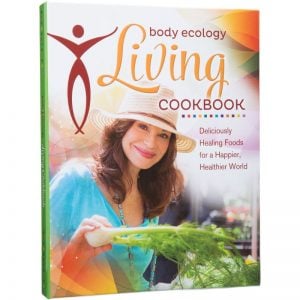Stuffed Peppers Recipe
Here is a recipe from my new cookbook available now! Over 250 sugar-free, gluten-free Body Ecology friendly recipes including smoothies, brunch, soups, dressings and dips, quick-and easy meals, desserts, and much more!
Body Ecology Healthy Stuffed Bell Peppers
Ingredients
There are more than 250 tasty recipes in The Body Ecology Living Cookbook designed to support your body’s inner ecology. Donna’s new cookbook has received rave reviews for making healthy food taste delicious.
- 2 cups cooked quinoa, amaranth, millet, or buckwheat
- 2 tablespoons coconut oil or ghee
- 1 medium onion, chopped fine
- 1 teaspoon Celtic sea salt, or to taste
- 2 tablespoons dried sweet basil
- 2 tablespoons paprika
- 6 garlic cloves, minced
- 2 stalks celery, chopped fine
- 1 pound greens, such as kale, parboiled 5 minutes, chopped
- 6 bell peppers, seeded, parboiled 5 minutes
- Preheat oven to 350 degrees.
- Sauté onion, sea salt, basil and paprika in coconut oil or ghee until onions are translucent. Add the garlic, celery, and greens, and cook until tender.
- Combine the onion and greens with the cooked grains. Taste, and adjust seasonings.
- Stuff red peppers with grain mixture and bake in an oiled casserole dish for 45 minutes.
A whole new world of exciting flavors will open up for you and your family when you explore recipes for the four Body Ecology grain-like seeds: millet, quinoa, buckwheat, and amaranth. You may be used to eating a lot of wheat and rice, as well as breads and cereals, but if you try our recipes with an open mind your cravings for these “common” breads and grains will diminish and then totally disappear. Try to eat a meal with these grain-like seeds (with vegetables, of course!) at least once a day. When soaked and then cooked with herbs, vegetables, and seasonings, these healing grains become even more flavorful.
As a rule, soaking these grains in water for 8 hours before cooking is a must to remove the phytic acid. Doing so makes them easier to digest. Be sure to wash them well: quinoa has a bitter outer coating, and millet tends to carry a lot of “dirt.” Use a very fine mesh strainer (particularly for amaranth and quinoa), and rinse these seeds under running water for a couple of minutes before cooking. The basic water-to-grain/seed ratio is 2 to 1 for quinoa and buckwheat, although it can vary according to taste, recipe, and method of cooking (e.g., pressure cooker). A 3 to 1 ratio of water-to-grain/seed is better for amaranth and millet.










